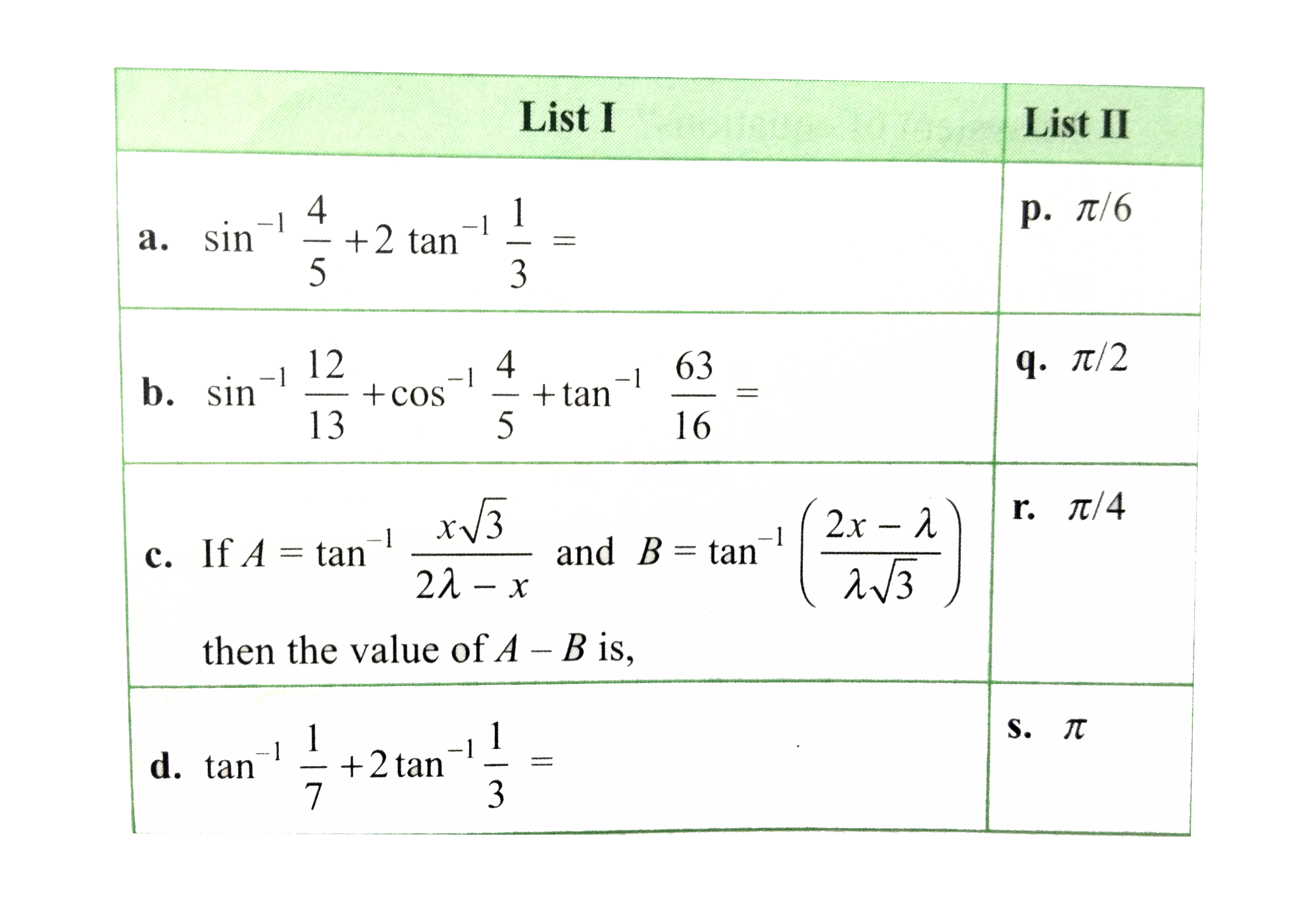sin⎧⎪ ⎪⎨⎪ ⎪⎩2⎛⎜ ⎜⎝sin−1(√5)3−cos−1(√5)3⎞⎟ ⎟⎠⎫⎪ ⎪⎬⎪ ⎪⎭ is equal to k√581 then k=
The correct Answer is:8
Let α=sin−1.√53, then cos−1.√53=π2−α
Hence the expression becomes
sin{2(α−π2+α)}=sin(4α−π)
=−sin4α
=−4sinαcosα(1−2sin2α)
=(−4)(√53)((203)(−19)
=√581
Topper's Solved these Questions
- INVERSE TRIGONOMETRIC FUNCTIONSBOOK - CENGAGECHAPTER - INVERSE TRIGONOMETRIC FUNCTIONSEXERCISE - JEE Main Previous Year
2 Videos
- INVERSE TRIGONOMETRIC FUNCTIONSBOOK - CENGAGECHAPTER - INVERSE TRIGONOMETRIC FUNCTIONSEXERCISE - JEE Advanced Previous Year
8 Videos
- INVERSE TRIGONOMETRIC FUNCTIONSBOOK - CENGAGECHAPTER - INVERSE TRIGONOMETRIC FUNCTIONSEXERCISE - Exercise (Matrix)
5 Videos
- INTRODUCTION TO VECTORS BOOK - CENGAGECHAPTER - INTRODUCTION TO VECTORS EXERCISE - JEE Previous Year
20 Videos
- JEE 2019BOOK - CENGAGECHAPTER - JEE 2019EXERCISE - Chapter 10
9 Videos
Similar Questions
If x, y, z are in A.P. and tan−1x,tan−1yandtan−1z are alos in A.P. then
View SolutionThe value of cot(23∑n=1cot−1(1+n∑k=12k)) is
View SolutionMatch the following List I to List II

View SolutionFind the all the values of lamda such that (x,y,z)!=(0,0,0)andx(hati+hatj+3hatk)+y(3hati-3hatj+hatk)+z(-4hati+5hatj)=lamda(xhati+yhatj+zhatk)
View SolutionIf y = y(x) is the solution of the differential equation, xdydx+2y=x2 satisfying y(1) = 1, then y(12) is equal to
View Solutionsin⎧⎪ ⎪⎨⎪ ⎪⎩2⎛⎜ ⎜⎝sin−1(√5)3−cos−1(√5)3⎞⎟ ⎟⎠⎫⎪ ⎪⎬⎪ ⎪⎭ is equal to k√581 then k=
View SolutionIf sinAsinB=√32 and cosAcosB=√52 then tanA+tanb is equal to
View SolutionIf (sin A)/(sin B)=(sqrt(3))/(2) and (cos A)/(cos B)=(sqrt(5))/(2) then tan A+tan B is equal to
View SolutionIf tan(cos^(-1)x)=sin(cot^(-1)1/2) then x is equal to- a.1/sqrt(5)b.2/sqrt(5)c.3/sqrt(5)d.sqrt(5)/3
View SolutionIf alpha=sin(sin^(-1)( 1/sqrt3)/(3)),beta=cos(cos^(-1)((1)/(sqrt(5)))-sin^(-1)((2)/(sqrt(5)))) then (beta^(2))/((3 alpha-4a^(3))^(2)) is
View SolutionThe value of sin[2cos−1√53] is
View SolutionIf cos(sin−1(2√5)+cos−1x) = 0, then x is equal to
A) 1√5
B) (−2√5)
C) (2√5)
D) 1
View Solutiontan(sin−1(35)+cos−1(3√13)=
View SolutionIf sin−1(1√5) and cos−1(3√10) are angles in [0,π2], then their sum is equal to
View SolutionIf cos(sin−1(2√5)+cos−1x) = 0, then x is equal to
A) 1√5
B) (−2√5)
C) (2√5)
D) 1
View Solutionsin⎧⎪ ⎪⎨⎪ ⎪⎩2⎛⎜ ⎜⎝sin−1(√5)3−cos−1(√5)3⎞⎟ ⎟⎠⎫⎪ ⎪⎬⎪ ⎪⎭ is equal to k√581 then k=
View Solution

